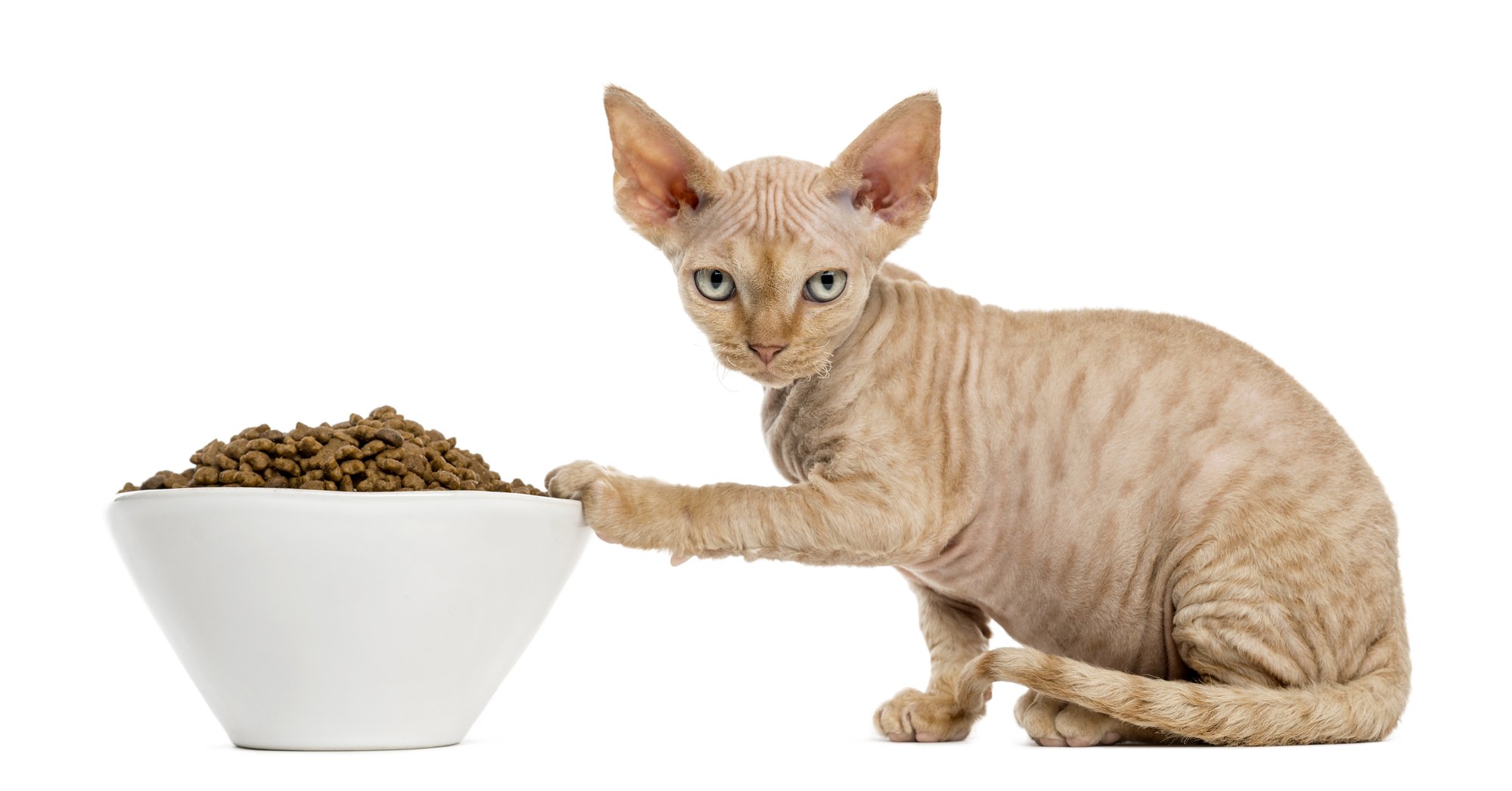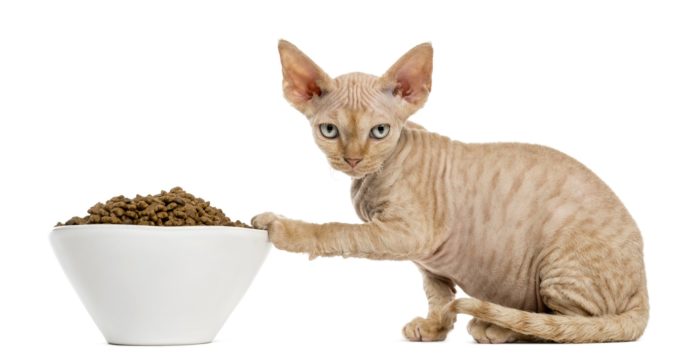
You may have heard you shouldn’t use plastic bowls to feed your cat. Plastic bowls have been thought to cause facial pyoderma, or chin acne, in cats. Plastic allergies have been implicated in some skin problems in children, so it is not an unreasonable concern, but unfortunately there is no scientific data on this phenomenon in cats.
William Miller, VMD, DACVD, Dermatology Section Chief at Cornell University, says, “Presumed bowl reactions were ‘common’ way back when and theoretically associated with the type of plastic used, aka allergic contact dermatitis to the plastic or colorizer. Red dishes were thought to be more of a problem. As plastics have changed over the years the frequency has decreased or, in my practice, disappeared entirely.”
BPA
Bisphenol A (BPA) is a chemical used in the manufacture of some plastics and resins. Commonly found in beverage containers and the lining of metal cans, BPA became a red-flag buzzword when it was found that it can seep into food and drinks and potentially have negative effects on the brain, behavior, and prostate glands of fetuses and children.
These concerns and the widespread use of plastics naturally sparked significant research efforts, but the FDA concluded that “BPA is safe at the current levels occurring in foods.”
Bacteria
“Since plastic dishes have or can develop a porous surface, I wonder if the reaction seen isn’t due to other things adhering to the bowl’s surface,” comments Dr. Miller. The porous surface of some plastics provides an ideal living space for bacteria and can be difficult to clean. This, combined with the presence of cat food, allows the bacteria to thrive and might then transfer to your cat’s chin as he eats.
Washing your cat’s bowls regularly is the best defense against bacteria. Bacteria are normally found on your cat’s skin and in the environment, but the combination of moisture, food particles, and saliva present in food and water bowls creates an ideal environment for bacterial overgrowth. This overgrowth can present as a biofilm, a thin slimy layer of bacteria and other materials that sticks to the bowl. Sometimes biofilms are visible, but they may also be transparent—feel the bottom of your cat’s water bowl after dumping out old water to check for any sliminess. Washing your cat’s bowls frequently will prevent biofilm.
Options
There are lots of different bowl options available for our cats’ dining pleasure. BPA-free plastic bowls abound, or you can avoid plastic entirely and use stainless steel or ceramics.
If you are caring for any outdoor cats, however, the Cornell Feline Health Center warns that shallow ceramic bowls can allow water to freeze faster and suggests using a thick plastic bowl instead (a solar water heater may be the ideal solution here).
Stainless steel bowls have excellent durability and are also easy to clean. If your cat likes to play with his water bowl, try using a wide based bowl with rubber on the bottom. The wide base makes the bowl more difficult to tip compared to bowls with a wide lip at the top, and the rubber bottom will prevent skidding.
To put more fun in mealtimes, you can also skip the food bowl altogether and opt for a cat-friendly food dispensing toy. These puzzle toys are excellent options for overweight cats who need more exercise and for young, energetic cats who need positive channels for their enthusiasm and athletic prowess.



